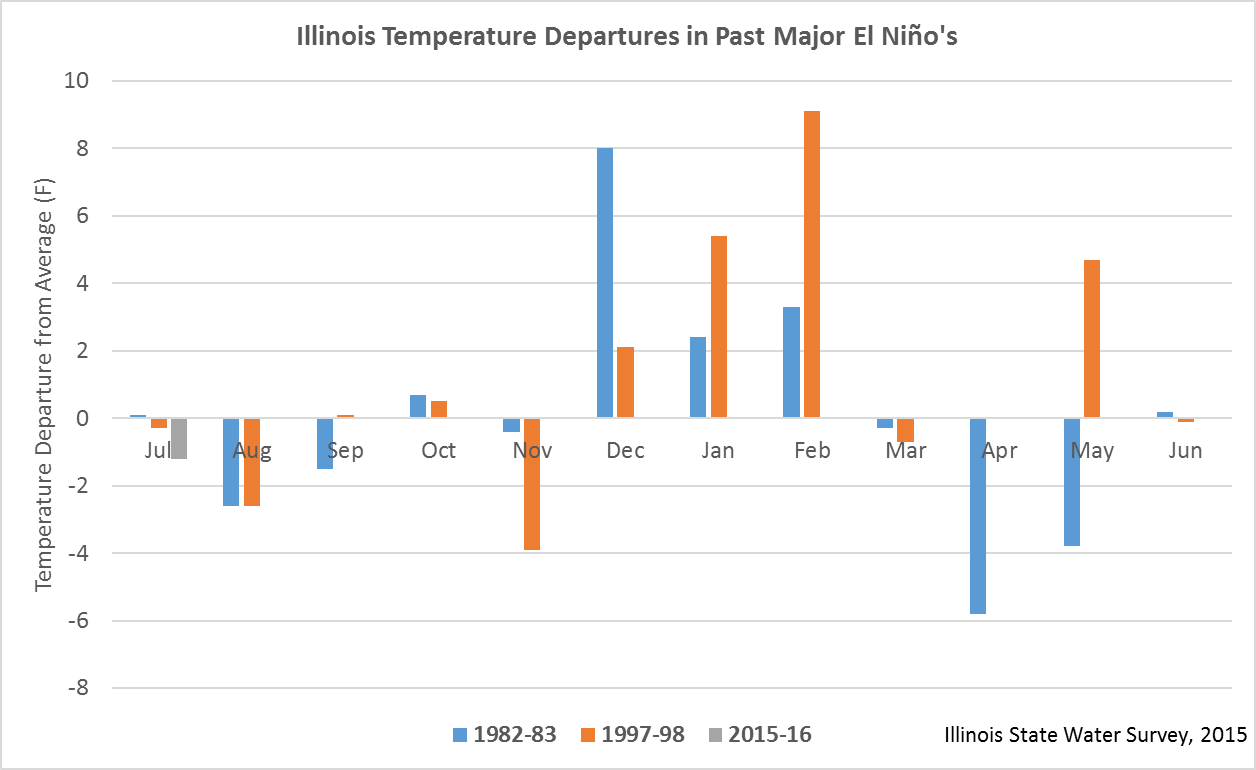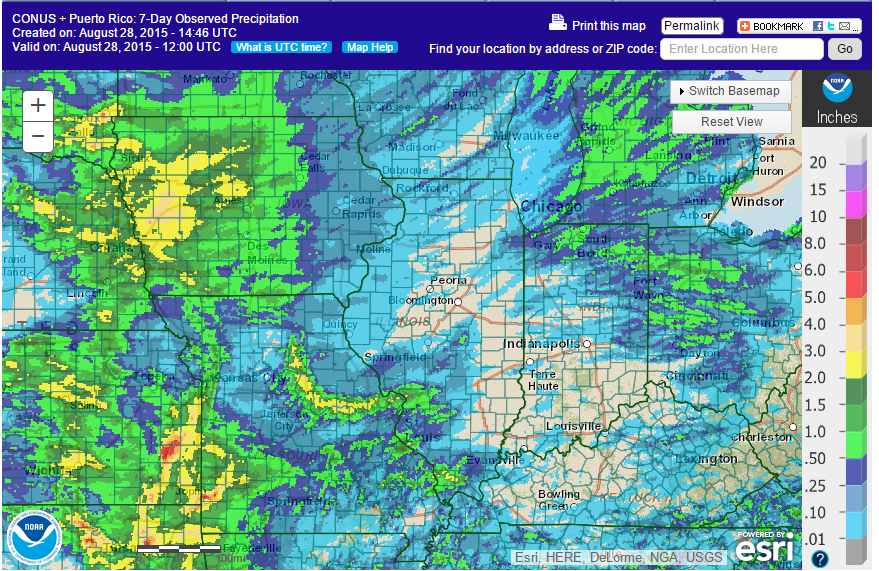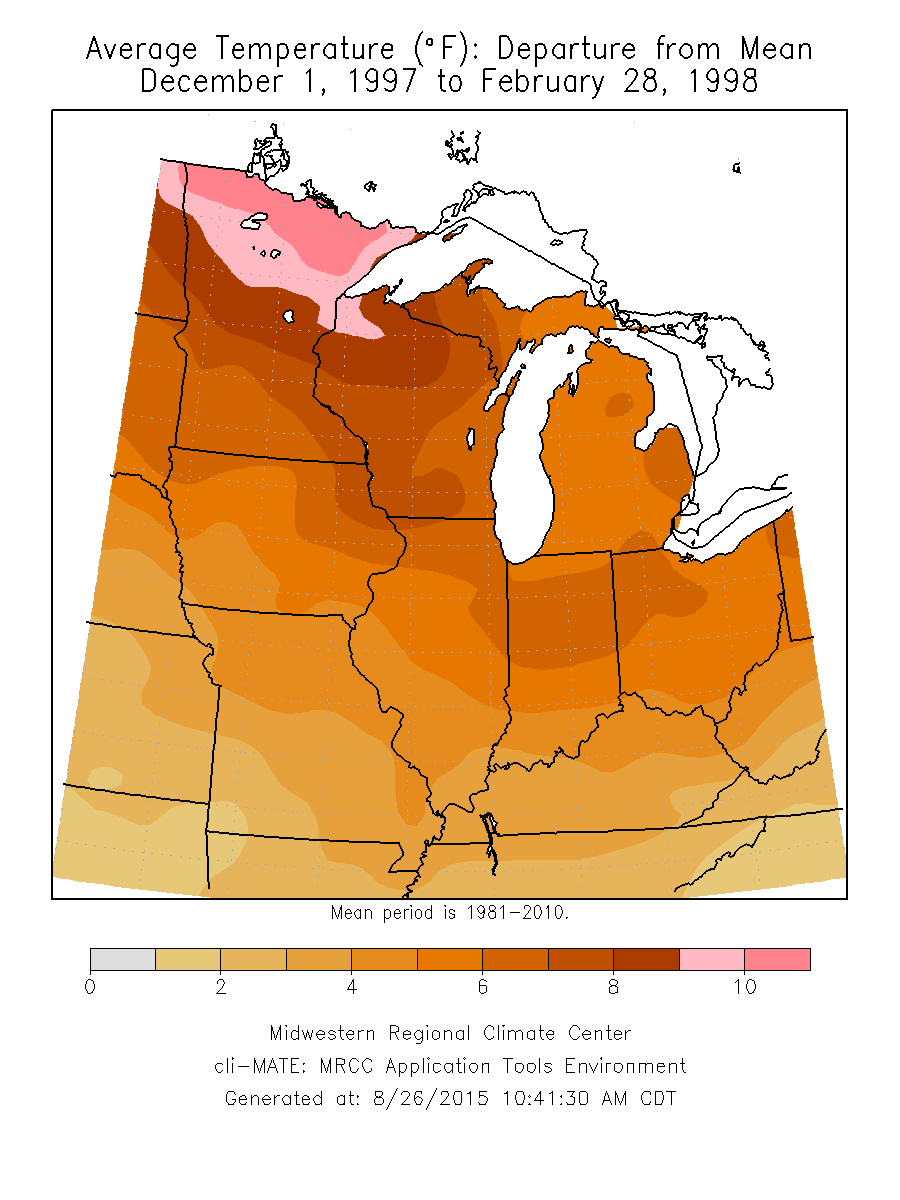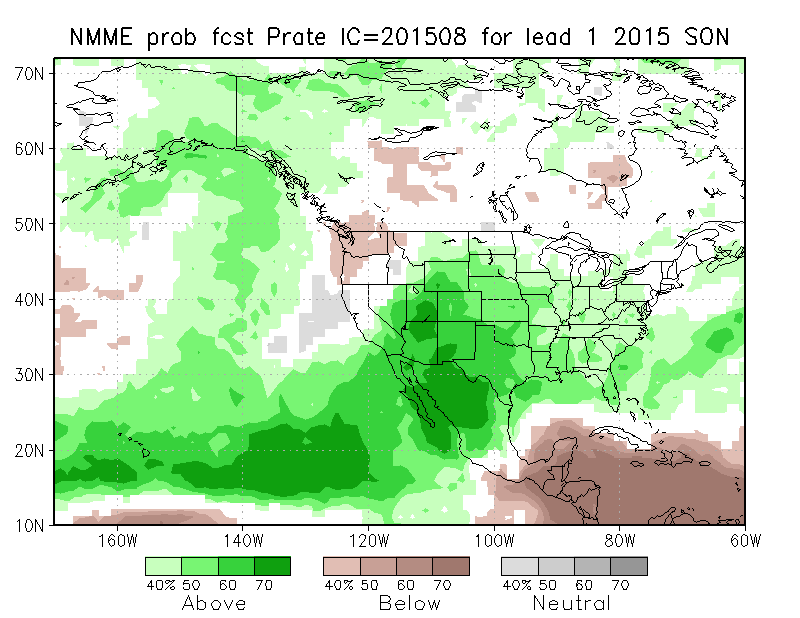The bar graph below summarizes the monthly temperature pattern for the past two strong El Niño events in Illinois – the 1982-83 event and 1997-98 event. The warmer than average winters stand out while the results for fall and spring are mixed.

In the fall as El Niño starts to develop, both of the earlier events tended to be a little cool at times, but not in a consistent way. Overall, the 1997-98 event was cooler thanks to the exceptionally cold November.
By December warmer than average temperatures were associated with El Niño, a classic pattern for stronger events. However, if you look closely, the nature of the warming differed between the two. The 1982-83 event had its warmest departures in December and less so in January and February. On the other hand, the 1997-98 event clearly ramped up with relatively cold temperatures in November, and each following month showing stronger above-average temperature departures through February.
By spring, the story gets complicated. By March, the influence had disappeared. April was colder than average for the 1982-83 event while near-average for the 1997-98 event. For May, Illinois temperatures were colder than average for the 1982-83 event and warmer than average for the 1997-98 event. That is hardly a consistent pattern.




